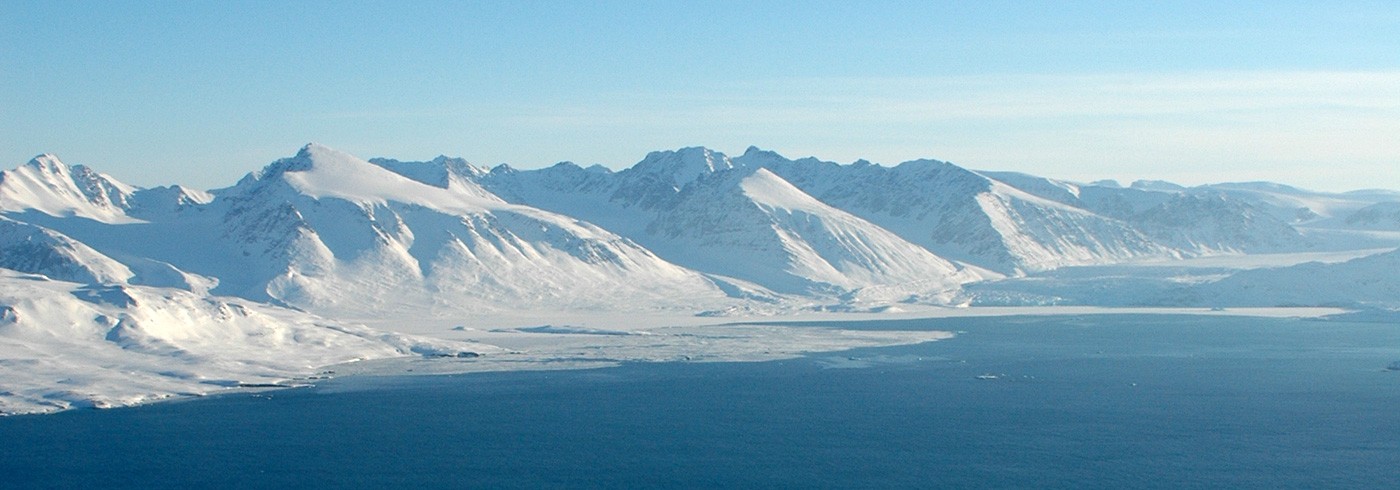Properties of aerosol particles in polar regions and trends in background CO2 levels: Long-term monitoring and aircraft measurements
1 March 2007 - 3 April 2007
Data points depict the vertical distribution of particle number density for the ASTAR
flight conducted 14 April 2007 (Blue: particles larger than 260 nm in diameter,
purple; particles larger than 10 nm in diameter).
Aim
The aim of the research is to combine long term monitoring observations and detailed process studies to better understand the role of aerosols and trace gases upon the Arctic atmosphere and climate. An understanding of these atmospheric constituents, their sources and sinks, transport and transformation processes, is a prerequisite to being able to make credible predictions of a future polar atmosphere and climate.
The energy budget on Earth is largely determined by the so-called greenhouse gases, which occur naturally in the atmosphere. By burning fossil fuel and changing the use of land, humans alter the atmospheric concentration of these gases, which results in the warming of the climate. Whereas the greenhouse gases warm the Earth, particles in the atmosphere generally, but not always, have a cooling effect on the climate. As the aerosols tend to scatter more light than they absorb, more aerosols in the atmosphere means that more radiation from the sun is reflected back to space. This means that less of the sun’s radiation reaches the ground. Particles also cool the planet through modifying the droplet size distribution of clouds. Alternation of the cloud droplets to smaller sizes makes the cloud brighter, in other words scatters more radiation back to space. Black particles such as soot tend to warm the atmosphere. One particular feature of black particles that has gained considerable interest recently, is the effect these particles have on the brightness of snow and ice. By making the snow darker, these particles enhance the melting of ice and snow.
By observing these trace gases and aerosols on different temporal and spatial scales we work to acquire a better understanding of the processes controlling their characteristics and their influence on the Arctic atmosphere and climate.
Research platforms and observations
The Zeppelin station
The long-term observations are conducted at the Zeppelin station in Ny-Ålesund, Svalbard. The station is located at 78°54’N and 11°53’E, at about 475 m above mean sea level on the Zeppelin Mountain ridge. Although the station is owned by the Norwegian Polar Research Institute, the two main users are Stockholm University and the Norwegian Institute for Atmospheric Research (NILU) and the monitoring work is supported by the Swedish Environmental Protection Agency. The continuous observations at the Zeppelin station include aerosol number density, aerosol size distribution, aerosol light scattering and light absorption properties, particle carbon composition and gaseous CO2. Radon 222 is also observed in collaboration with University of Heidelberg in Germany.
The Zeppelin station is also used for campaignbased observations. During 2007 two campaigns were conducted, one in spring and one in summer. The main focus was to study the temporal evolution of sulphur dioxide (SO2). Photochemical processes convert SO2 to gaseous H2SO4 that may condense onto pre-existing particles or actually nucleate to form new particles. By observing the tracer with high temporal resolution we may interpret the data with respect to the source, which may be both of natural or anthropogenic origin.
ASTAR – Airborne measurements
The international aircraft experiment ASTAR 2007 was conducted during March and April. The main focus of ASTAR (Arctic Study of Tropospheric Aerosols, Clouds and Radiation) is to gain information about the vertical distribution of aerosols and precursor gases. The time period was chosen to capture some of the anthropogenic pollutants that enter the Arctic during late winter and spring, the so-called Arctic Haze. The importance of information in the vertical air column is illustrated by data from the flight on 14 April 2007. Data for two particle size ranges are presented. Data in brown show the number density of particles with a diameter larger than 260 nm in diameter and data in orange show the number density of particles with a diameter larger than 10 nm in diameter. Note the layer of the larger particles around a pressure of 600 hPa (roughly 4 km altitude), which shows a concentration of about 3 times what was observed near the surface. The small particles form a layer around a pressure of about 350 hPa (roughly 7 km altitude). The number density in this layer is comparable to the concentrations near the surface.
Snow sampling
As a collaborative effort with the Norwegian Polar Institute, snow samples around Svalbard were collected and analyzed for the content of elementary carbon (black carbon). We note that the Russian settlement Barentsburg influences the amount of black carbon in the snow at Linnebreen and that there appears to be an east–west gradient in the concentrations. More samples are under way and we also intend to gather more information over time.

